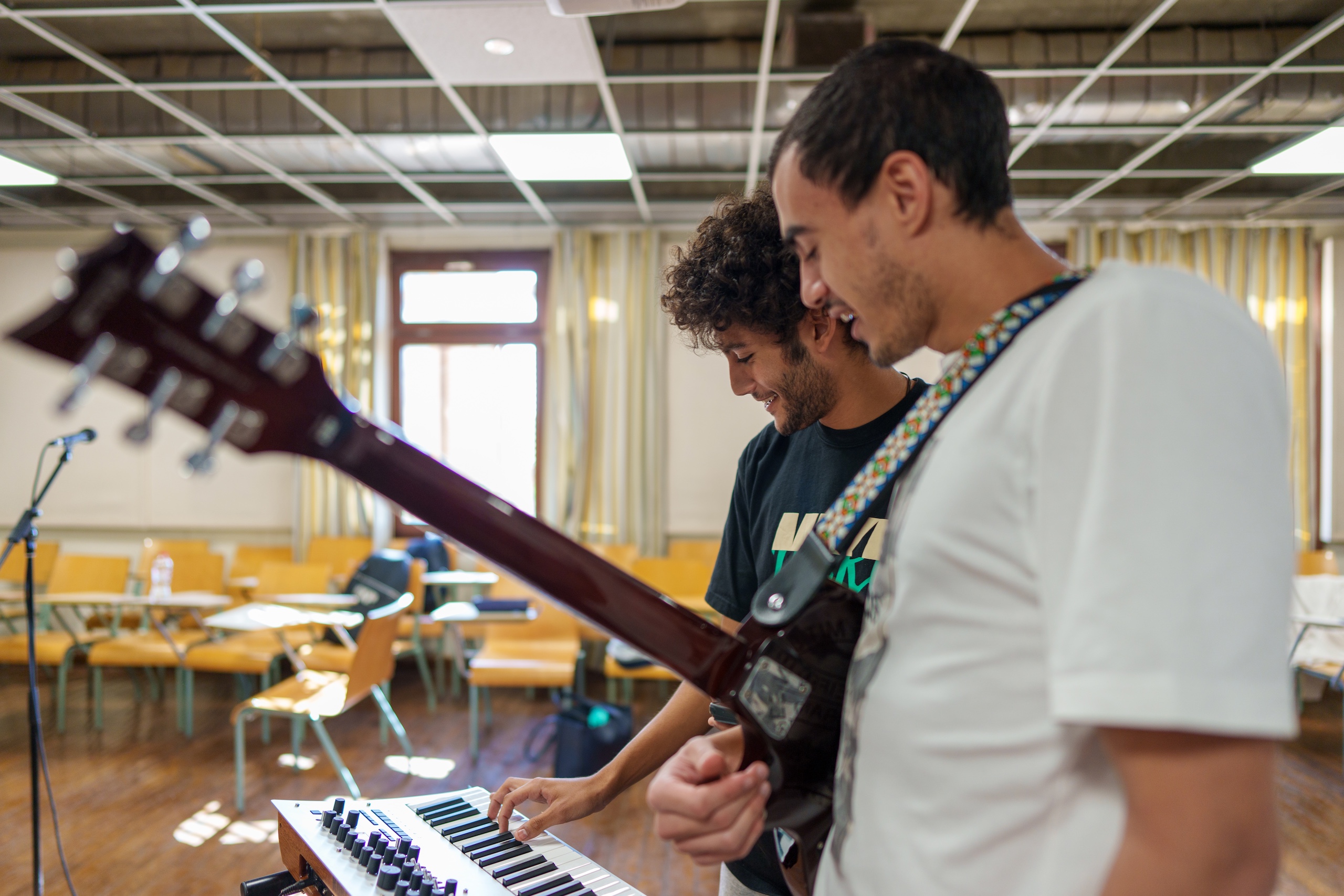Music Major
The music program within the Department of Arts has remodeled its music technology and musical arts in performance majors into a singular music major. Students within the major now have the option to choose a concentration in either music technology or music performance. Non-music majors still have the option to minor in either music technology or music performance.
Restructuring the major is designed to consolidate what both programs originally shared and streamline the majors process to define their concentration.
"Aligning the concentrations and putting them under one roof allows for a much streamlined format so students can plan a four-year degree,” said David Rafferty, associate professor of practice and director of the music program. “With the restructuring, all music students can be in the same prerequisite classes together, such as Arabic and Western Music Theory, before breaking out into specific genres and specializations.”
By giving all students the same baseline, the program can continue to grow and flourish as a united music community. “It's a fresh start that allows us to focus on our strengths — such as Arabic music, jazz, pop and rock — which many of our students are passionate about,” said Rafferty.
Sustainable Energy Minor
The Department of Petroleum and Energy Engineering’s new sustainable energy minor was created for students who are interested in sustainable energy and environment. The program is open to any students in the School of Sciences and Engineering (SSE), except those already majoring in petroleum engineering. For students curious about sustainable development, energy policy and climate innovation, this program offers a mix of core engineering and economics courses that suit those interests.
“Graduates of the program will be well-prepared for careers in the renewable energy sector, sustainability consulting, environmental policy and energy systems design,” said Abdelaziz Khlaifat, professor and department chair. “The sustainable energy minor is designed to give students a solid foundation in energy systems, renewable technologies and sustainability practices. It offers a pathway for SSE students to be more environmentally conscious and align with industry standards emphasizing sustainability, innovation and systems integration.”
Genomics and Biotechnology Specialization
Genomics and biotechnology are now being offered as a specialization for biology majors, alongside ecology and conservation biology.
In the growing genome-based fields within academia and industry, a concentration in genomics can offer key insight into the fundamentals of biological science. Students will have the opportunity to choose from classes like Bioinformatics, Molecular Biology of the Gene, and Cellular and Molecular Immunology, and Tumor Biology, in addition to the biology core requirements.
“This specialization isn’t just about preparing students for careers in academia or industry,” said Ahmed Moustafa, professor of bioinformatics and genomics data science. “It also aligns directly with Egypt’s national vision and the global shift toward precision medicine. With the Egypt Genome Project underway, there’s a significant investment in genome-centered healthcare that will open new opportunities in research, diagnostics and therapies. Our goal with this program is to ensure that our students are equipped for these opportunities. They will graduate with the knowledge and skills to participate in these advancements and help shape the future of precision medicine in Egypt, across the region and around the world.”
The Fall 2025 semester brings with it new academic offerings: a restructured music major, a minor in sustainable energy and a biology specialization in genomics.










